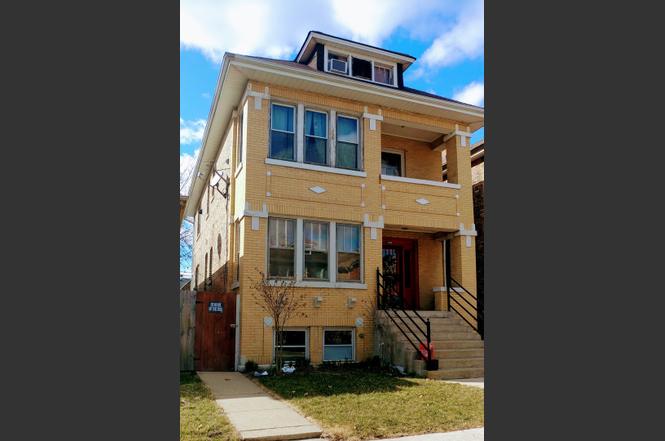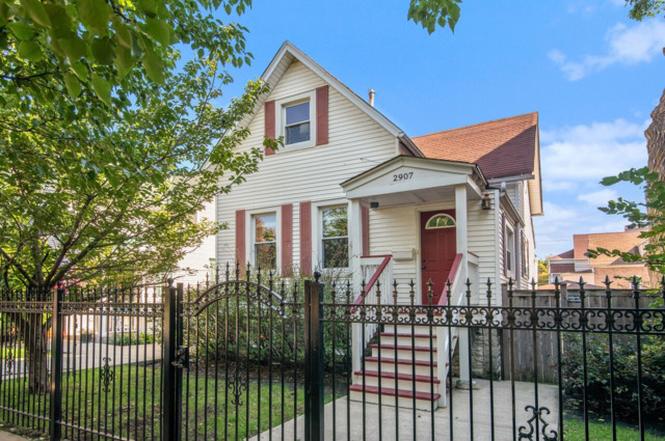
Classical musicians who dominated the early days of recorded sound made their film debuts, along with the many future stars of radio's "golden age": Fred Allen, Jack Benny, George Burns, Gracie Allen, Edgar Bergen, Jack Haley just to name a few.
2819 ROCKWELL ST CHICAGO 1930 FLATS FULL
#2819 rockwell st chicago 1930 flats old photos fullīrown, Joan Blondell, William Demarest, Claire Trevor, Sylvia Sidney, Humphrey Bogart and Spencer Tracy first appeared on screen in ten-minute dramatic and comedy sketches, as did a few silent stars making the transition like Blanche Sweet.Īl Jolson filmed A Plantation Act in August 1926, a full year before The Jazz Singer. When Warner Brothers decided to promote the feature as Jolson's talkie debut, the earlier short was removed from circulation. Initially thought lost, it was restored, in part by the Vitaphone Project's efforts, for a laser disc set in the 1990s and later released on DVD with the feature. Īt the time, there was much fear that these little films (and the sound features that followed) would kill vaudeville, a fear that was justified for many individual performers. While there was always a chance that a stage performer could become a household name by appearing in these, his or her act could no longer be repeated on stage, town after town, once one filmed performance appeared in theaters across the country. A few comedy acts for Vitaphone even made light of this fact, particularly Georgie Price’s 1929 title, Don't Get Nervous.Īlthough the term "Vitaphone Variety" was still used with some Warner film shorts running under one reel (or 10 minutes) well into the 1950s, the trade periodicals marketed them under different logos after the 1931–32 season: Pepper Pots and Vitaphone Novelties (after 1936), while lengthier productions (running two reels or 20 minutes) morphed into the Broadway Brevities. By this time, the primary producer in charge was Samuel Sax, who oversaw the majority of the New York filmed productions.

Later titles completed in California in the forties and fifties sometimes recycled the "Vitaphone Variety" logo, but were usually marketed in the trade periodicals as either "Hollywood Novelties" or "Warner Novelties" and were mostly documentary rather than musical or comedy acts. The impact that the earliest Vitaphone Varieties had on world cinema has been a frequent footnote in many film history books, but it was only in recent decades that books have bothered to analyze them in depth (among them, Roy Liebman's Vitaphone Films and Edwin M.Īmong this later group, two 1945-46 titles, Story of a Dog and Smart as a Fox, were nominees for the Academy Award for Best Live Action Short Film in the one-reel category. Bradley's The First Hollywood Sound Shorts, 1926–1931). The Vitaphone Project only started in 1991 rounding up missing discs and matching them with films made before the studio switched to optical film soundtracks. Three years later, MGM/UA issued the first group of them to laser disc, with Warner releasing the first significant number on DVD as part of a multi-disc edition of The Jazz Singer.
2819 ROCKWELL ST CHICAGO 1930 FLATS ARCHIVE
Since then, the Warner Archive Collection has made more available in a series of sets, as well as re-releasing Don Juan with its accompanying shorts. #2819 rockwell st chicago 1930 flats old photos archive The following list is not complete but fairly close. The 1926–1932 titles (the official "Vitaphone Varieties") are arranged by the Vitaphone title card numbers. They are then grouped by the year in which they were filmed, but not necessarily the same year they were released to theaters. #2819 rockwell st chicago 1930 flats old photos full.#2819 rockwell st chicago 1930 flats old photos archive.


The new, ADA compliant, Rockwell station opened on August 16, 2006.

As part of the CTA's Brown Line Capacity Expansion Project, the station closed on February 20, 2006, demolished and rebuilt. The design of the original station house and platform canopy were similar to those that still exist at the neighboring Francisco Station. Rockwell opened Decemas part of Northwestern Elevated Railroad's Ravenswood branch. The area surrounding the station consists of mostly residential single family homes or two-flats, with a small neighborhood shopping district flanking the station entrance on Rockwell Street. Rockwell is a surface level station with a single entrance/exit situated at 4648 North Rockwell Street between Leland Avenue and Eastwood Avenue in the Lincoln Square neighborhood of Chicago. Rockwell is the last station on the surface section of the Brown Line between Rockwell and Western the line ascends and runs on elevated tracks for the rest of the route. The adjacent stations are Francisco, which is located across the Chicago River about 3⁄ 8-mile (0.60 km) to the west, and Western, located about 1⁄ 4-mile (0.40 km) to the east. It is an at-grade station with a single island platform, located in Chicago's Lincoln Square neighborhood. Rockwell is an 'L' station on the CTA's Brown Line.


 0 kommentar(er)
0 kommentar(er)
